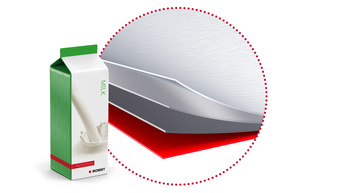Processed materials
BOBST and flatbed die-cutting go hand in hand, after all we did invent the technology with our first Autoplaten® press, the AP 900, introduced back in 1940. From that pioneering die-cutter, right up to today’s highly sophisticated production lines, BOBST has continuously developed and improved the technology of the flat bed die-cutting process.
We have achieved this by listening to the feedback of our customers, by investing heavily in research and development, and by accumulating unmatched skills and experience among our people.
The BOBST range of flat bed die-cutters (also called cutter-creasers or punching machines in some countries) is the most extensive available in the market and offers a wide choice of productivity and automation levels, in press widths ranging from a compact 76cm to an impressive 2.1m. Each of the machines in the range offers a level of reliability, versatility, and performance that closely matches the needs of a particular industrial sector or type of business.
Paper
Paper is a fibre-based material produced from wood, rags or organic material. The types of paper used in the packaging and graphic arts industries typically use wood and/or recycled paper and board, which is then chemically or mechanically processed to produce cellulose pulp. This pulp is bleached and processed in a paper making machine to produce reels of paper which may optionally be coated or finished to provide a better surface and/or improved visual appearance.
Paper may be between 0.07 mm and 0.18 mm thick, with paper for printing and packaging applications generally being in a range between 60 and 120 gsm. The crossover point between paper and board is normally considered to be around 160 grams per square meter (gsm), as it is only at this level that a fibrous material is likely to be stiff and rigid enough to make a container.
Paper has a wide range of industrial applications including use for the packaging of products as diverse as confectionery and cigarettes, as a component in packaging laminates, and for many commercial print uses.
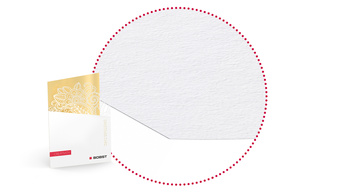
Carton board
Carton board (also called cardboard, paperboard or solid board) is the name for a range of paper based materials that includes folding box board (FBB, GC or UC), solid bleached board (SBB, SBS, or GZ), solid unbleached board (SUB or SUS), white lined chipboards (WLC, GD, GT, or UD), some unlined chipboards, and certain laminated boards.
To manufacture carton board, fibrous material, either from trees, recycled paper, or a mixture of the two, is turned into pulp. It is then bleached and processed in a board making machine to create a board consisting of one or more layers, which may optionally be coated to provide a better surface and/or improved visual appearance.
The crossover point between paper and board is normally considered to be around 160 grams per square meter (gsm), as it is only at this level that a fibrous material is likely to be stiff and rigid enough to make a container.
Cartonboard is primarily used in the packaging industry to produce all types of folding cartons, but may also be used for graphics applications. For folding cartons the board used will normally be in the range 200 to 600gsm, or 350 to 800 microns.
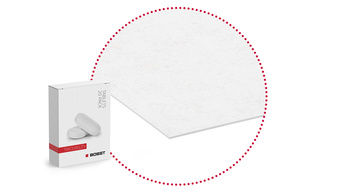
Corrugated board
Corrugated board is manufactured by combining lining paper with a fluting medium in a unit called a single facer. The liners used may be made from recycled, test, or kraft papers, and will consequently have a brown or white surface, which may be coated or semi-coated, depending on the application they are to be used for. Fluting medium is generally recycled paper.
In the single facer unit, heat, steam, and a corrugating roller are used to corrugate the fluting medium, which then has the liner attached. This creates single face, the basic building block of all corrugated board. Single face is used 'as is' for some specific applications such as litho-lamination, but is normally combined with further liners and fluting media to produce single wall corrugated (single face plus a top liner), double wall (single wall plus single face), or multi-wall (further combinations of the above).
The thickness of the corrugated material will depend on the fluting height created by the single facer and the combination of flutings used. The range of thicknesses can vary from 0,5 mm for the finest, up to 15 mm for the thickest, and sometimes more. The most commonly used grammages are in the range from 80 gsm to 300 gsm, however for some specific applications lighter or heavier papers may be used.

Heavy solid board
Heavy solid board is a type of carton board with a high basis weight.
To manufacture heavy solid board, fibrous material, either from trees, recycled paper, or a mixture of the two, is turned into pulp. It is then bleached and processed in a board making machine to create a board consisting of one or more layers, which may optionally be coated to provide a better surface and/or improved visual appearance. The resulting board will normally be heavier than 1000 grams per square meter (gsm).
Heavy solid board is primarily used in the packaging industry for applications where a high level of mechanical strength is required, such as trays for meat products or puzzle.
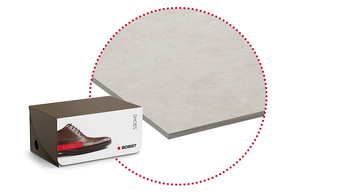
Semi-rigid plastics
Today’s converters have a wide choice of plastic materials available, including products such as Polypropylene (PP), Polyethylene (PE), Polyvinylchloride (PVC), Polyesterterephtalate (PET), and more recently, Polylactic acid (PLA) which is made from renewable sources.
For some years there has been a level of transition by packaging specifiers from traditional cardboard to plastics, particularly in the area of cosmetic and luxury packaging.
One of the major benefits of plastic packaging is to be found in its high “performance/weight” ratio, its lightness (which enables savings in transportation), and its high calorific value which improves its efficiency of incineration.
Transparent and semi-transparent packaging tends to be associated with luxury or high added-value products, and the versatility and design flexibility that plastics offer can give life to packaging that will stand out among rival products.
The movement toward these materials has been driven by the specific features and benefits which plastics bring to high-end packaging applications, including:
- allowing the customer to see the product inside and to check the contents easily
- specialized effects with full or partial visibility
- glossy finishes that add interest to the package
- moisture resistance
- excellent coloring ability
- good folding and die-cutting properties
- recyclability
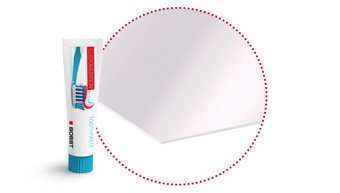
Laminates
A laminate is a material that can be constructed by bringing two or more layers of material together. This can include different material combinations from a wide spectrum of flexible substrates including thin aluminum foil, film, and paper. These materials have different physical properties and varying thicknesses that combine to provide the required barrier performance.
Converted single- or multi-layer webs are used in a number of industries, from the packaging of food and non food products to industrial applications including the photovoltaic industry.
